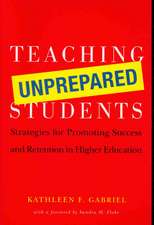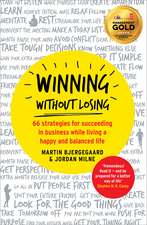The Art of Changing the Brain: Enriching the Practice of Teaching by Exploring the Biology of Learning
Autor James E. Zullen Limba Engleză Paperback – oct 2002
Neuroscience tells us that the products of the mind--thought, emotions, artistic creation--are the result of the interactions of the biological brain with our senses and the physical world: in short, that thinking and learning are the products of a biological process.This realization, that learning actually alters the brain by changing the number and strength of synapses, offers a powerful foundation for rethinking teaching practice and one's philosophy of teaching.James Zull invites teachers in higher education or any other setting to accompany him in his exploration of what scientists can tell us about the brain and to discover how this knowledge can influence the practice of teaching. He describes the brain in clear non-technical language and an engaging conversational tone, highlighting its functions and parts and how they interact, and always relating them to the real world of the classroom and his own evolution as a teacher. "The Art of Changing the Brain" is grounded in the practicalities and challenges of creating effective opportunities for deep and lasting learning, and of dealing with students as unique learners.
Preț: 234.77 lei
Nou
44.94€ • 48.83$ • 37.77£
Carte tipărită la comandă
Livrare economică 21 aprilie-05 mai
Specificații
ISBN-10: 1579220541
Pagini: 263
Dimensiuni: 152 x 229 x 15 mm
Greutate: 0.38 kg
Ediția:1
Editura: Taylor & Francis
Colecția Routledge
Locul publicării:Oxford, United Kingdom
Public țintă
Postgraduate and Professional Practice & DevelopmentNotă biografică
Cuprins
Recenzii
Descriere
Engaging and logically organized Readers will feel encouraged and eager to integrate the concepts into their own philosophy of teaching and learning."?Effective Teaching"The book is not merely an explication but a thoughtfully crafted, neuroscientfically informed teaching device that obeys the advice offered."?American Journal of Psychology"James Zull's crystal-clear mapping of how learning occurs, how learning changes the brain, and how many parts of the brain are activated as one learns should be interesting for all who teach. Zull relays a teaching approach and the neuroscience behind that approach that can dramatically affect learning."?Nursing Education Perspectives"This is the best book I have read about the brain and learning. Zull perspective forms the foundation for a teaching approach that can dramatically improve human learning."?David A. Kolb, Dept. of Organizational Behavior, Case Western Reserve UniversityJames Zull invites teachers in higher education or any other setting to accompany him in his exploration of what scientists can tell us about the brain and to discover how this knowledge can influence the practice of teaching. He describes the brain in clear non-technical language and an engaging conversational tone, highlighting its functions and parts and how they interact, and always relating them to the real world of the classroom and his own evolution as a teacher."






















